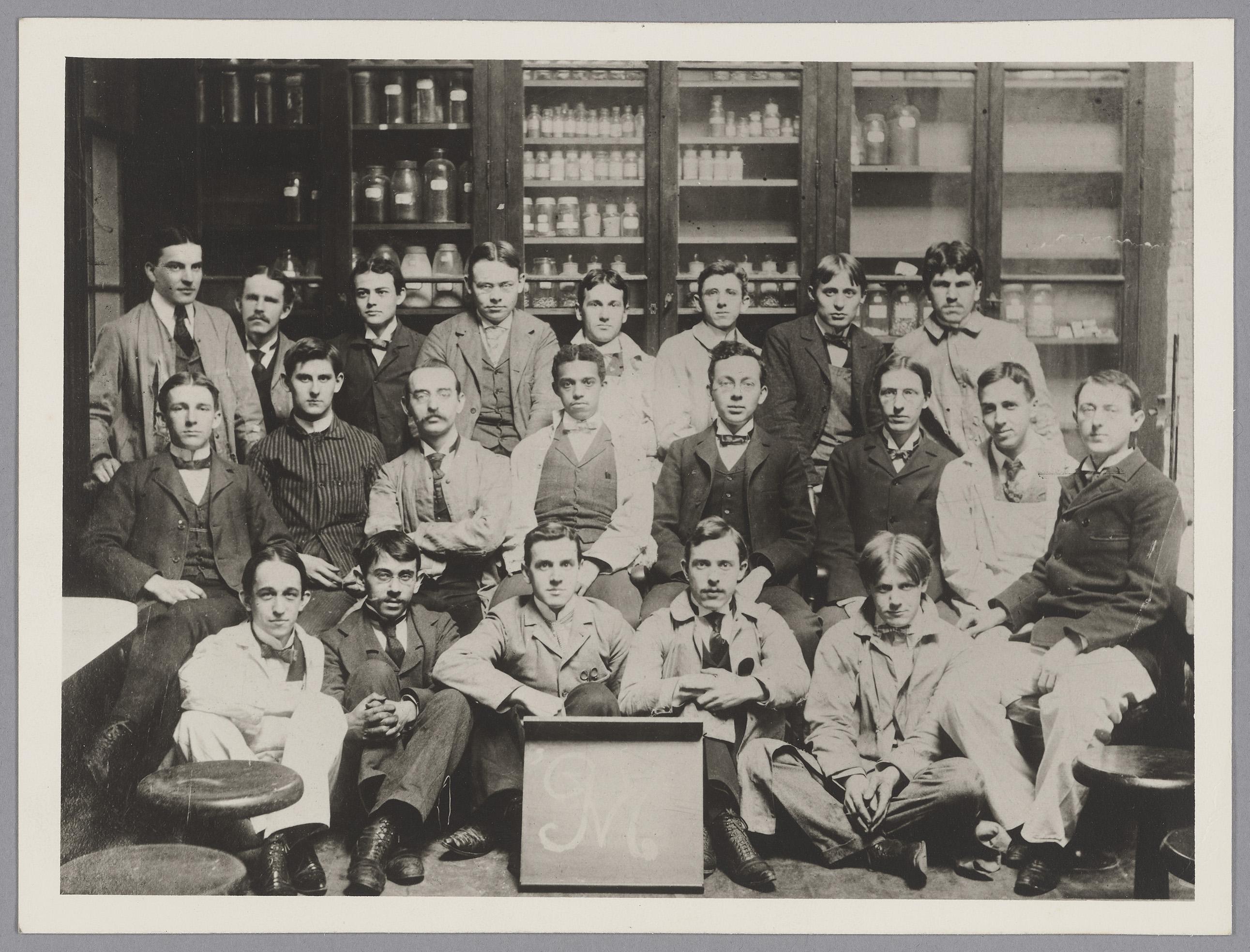Chemistry Class of 1897

Chemistry Class of 1897, including Frederick J. Hemmings (center, 4th from left), ca. 1897.
Department of Chemistry
The MIT Department of Chemistry dates back to 1865, when the Institute held its first chemistry classes (15 students) at its early campus in Boston's Back Bay. At the time, the Chemistry Department and its laboratories were located in the basement. In 1869, the Lowell Institute began holding evening classes, including chemistry open to the public, men and women.
Frederick J. Hemmings
Frederick John Hemmings '97 was admitted to MIT in 1893 as a regular student in Chemistry (Course V). With the exception of his junior year, his academic record at MIT was generally excellent, showing honors, credits, and passes in most subjects.
Hemmings's final thesis was entitled "The Change that Glucose Undergoes During Fermentation." The study comprised 27 pages of text plus graphs. Its aim, as laid out in the introduction, was "to closely watch samples of glucose during the progress of natural fermentation, in order to determine the manner in which their structure breaks down, the influence of their composition on their stability and if possible to throw any light on their molecular structure." Hemmings concluded that the speed of hydrolysis in different starches was alike, regardless of the relative complexity of their molecular structures.
After MIT, Hemmings worked as a chemist with Henry Carmichael, Analytical and Consulting Chemist in Boston. Around 1911, he left to accept a position as assistant chemist at the U.S. Navy Yard in Charlestown, MA. He was promoted to associate chemist or chemist by 1926 and to chief chemist by 1944, retiring before 1948.